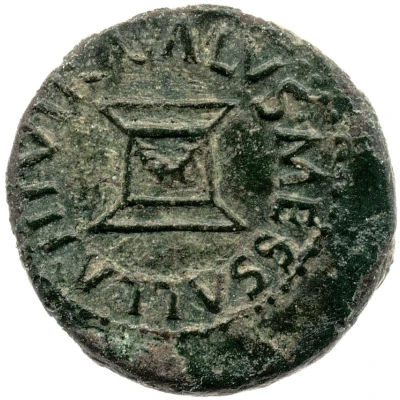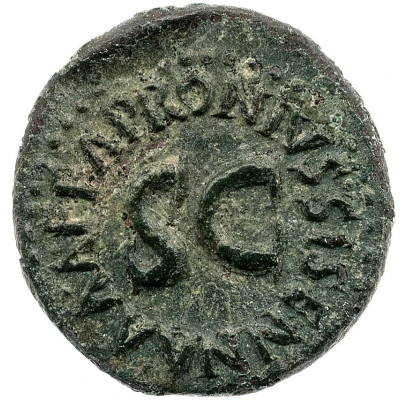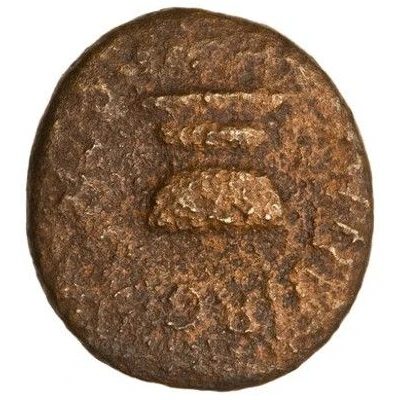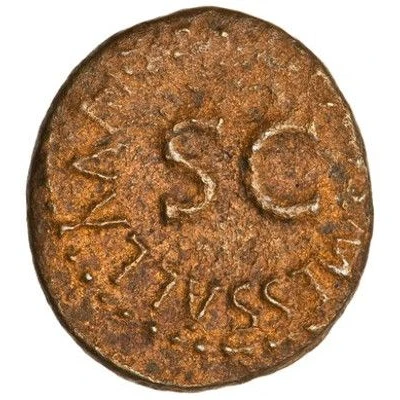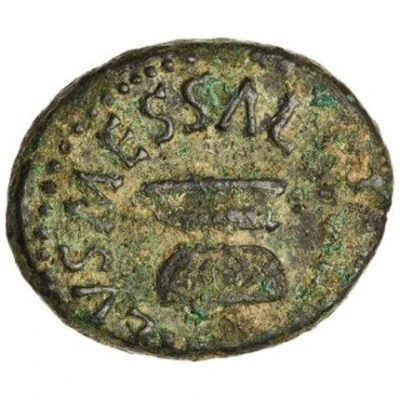


© American Numismatic Society (ANS)
Quadrans SISENNA APRONIVS A A A F F S C 5 BC
5 BC year| Bronze | 2.6 g | 17 mm |
| Issuer | Rome › Roman Empire (27 BC - 395 AD) |
|---|---|
| Emperor | Augustus (Caius Octavius) (27 BC - 14 AD) |
| Type | Standard circulation coin |
| Year | 5 BC |
| Value | 1 Quadrans = ¼ As = 1⁄64 Denarius |
| Currency | Denarius, Reform of Augustus (27 BC – AD 215) |
| Composition | Bronze |
| Weight | 2.6 g |
| Diameter | 17 mm |
| Shape | Round (irregular) |
| Technique | Hammered |
| Demonetized | Yes |
| Updated | 2024-10-06 |
| Numista | N#247933 |
|---|---|
| Rarity index | 100% |
Reverse
Legend surrounding S C.
Script: Latin
Lettering:
SISENNA APRONIVS A A A F F
S C
Unabridged legend:
Sisenna, Apronius, Auro, Argento, Aere Flando Feriundo.
Senatus Consulto.
Translation:
Sisenna, Apronius, Auro, Argento, Aere, Flando, Feriundo. Senatus Consultum.
Sisenna and Apronius for the casting and striking of gold, silver, and bronze coins. Decree of the senate.
Comment
Mass varies: 1.77–3.23 g;Diameter varies: 14–18.5 mm;
Source: Online Coins of the Roman Empire (OCRE)
Interesting fact
The Quadrans coin was used in ancient Rome as a form of currency and was equivalent to one-fourth of a Roman denarius, which was the standard unit of currency at the time. The Quadrans coin was made of bronze and had a distinctive design that featured the image of a bust of a Roman emperor on one side and an eagle on the other. The coin was minted during the reign of Emperor Augustus, who ruled Rome from 27 BC to 14 AD, and it remained in circulation for centuries. Despite its small value, the Quadrans coin played an important role in the Roman economy, as it was used for everyday transactions and was a symbol of the Roman Empire's power and influence.
